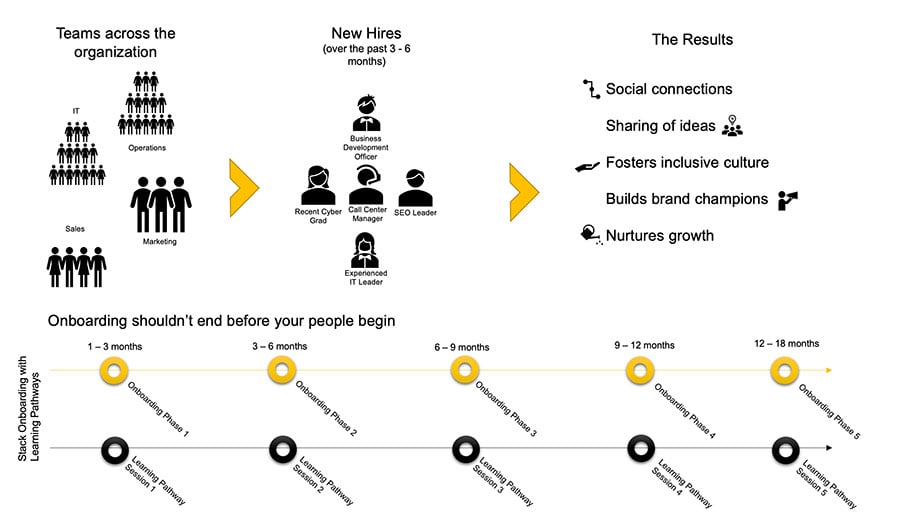In a pre-pandemic world, onboarding was an event in itself. It often involved travel, multi-day learning experiences, lunches, dinners, happy-hours, practical application activities, meet-and-greets with company stakeholders or panels with department leaders. Enabling a new hire to get upskilled and assimilated into company culture was top priority. Yet with all that in mind, Gallup finds that “only 12% of employees strongly agree that their organization does a great job of onboarding new employees.”2
In the current flexible work environment, radical evolution of onboarding has yet to occur. Onboarding often boils down to a virtual one-on-one welcome with a manager and round robin conversations with peers. The challenge: managers are so burdened by day-to-day tasks and meeting overload that they're unable to dedicate the time and attention needed to properly onboard their new team members--especially as it relates to cultural acclimation.








